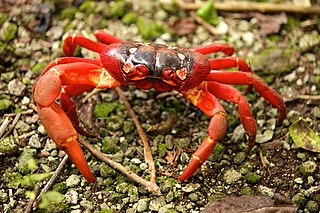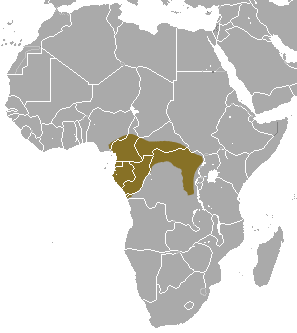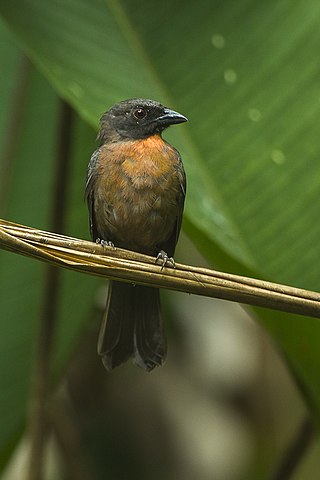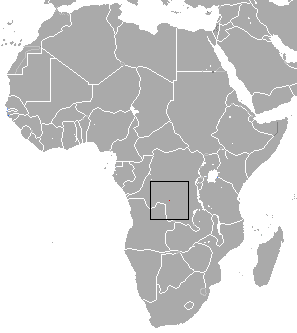Chadinga Conservation Park, formerly the Chadinga Conservation Reserve, is a protected area in the Australian state of South Australia located in the Chadinga Dunes on the western side of Lake MacDonnell, in the locality of Penong. The park is classified as an IUCN Category VI protected area.

The Christmas Island red crab is a species of land crab that is endemic to Christmas Island and Cocos (Keeling) Islands in the Indian Ocean. Although restricted to a relatively small area, an estimated 43.7 million adult red crabs once lived on Christmas Island alone, but the accidental introduction of the yellow crazy ant is believed to have killed about 10–15 million of these in recent years. Christmas Island red crabs make an annual mass migration to the sea to lay their eggs in the ocean. Although its population is under great assault by the ants, as of 2020 the red crab had not been assessed by the International Union for Conservation of Nature (IUCN) and it was not listed on their Red List. The crab's annual mass migration to the sea for spawning is described as an "epic" event. Millions emerge at the same time, halting road traffic and covering the ground in a thick carpet of crabs.
Monomorium santschii is a species of ant that is native to Tunisia. The most famous species in the genus Monomorium is the highly invasive pharaoh ant, Monomorium pharaonis.

The red-crowned ant tanager is a medium-sized passerine bird from tropical America. It is the only species now placed in the genus Habia. This species was long placed with the tanagers (Thraupidae), but it is actually closer to the cardinals (Cardinalidae).

The red-throated ant tanager is a medium-sized passerine bird. This species is a resident breeder on the Caribbean slopes from southeastern Mexico to eastern Panama. It was formerly placed with the red-crowned ant tanager in the genus Habia. It was usually considered an aberrant kind of tanager and placed in the Thraupidae, but is actually closer to the cardinals (Cardinalidae). Consequently, it can be argued that referring to the members of this genus as ant tanagers is misleading, but no other common name has gained usage.
The Udzungwa forest partridge, also known as the Udzungwa partridge, is a small, approximately 29 centimetres (11 in) long, boldly barred, brownish partridge with rufous face, grey underparts, olive-brown crown and upperparts. It has a red bill, brown iris and yellow legs. Both sexes are similar.

Tamandua is a genus of anteaters in the Myrmecophagidae family with two species: the southern tamandua and the northern tamandua. They live in forests and grasslands, are semiarboreal, and possess partially prehensile tails. They mainly eat ants and termites, but they occasionally eat bees, beetles, and insect larvae. In captivity, they will eat fruits and meat. They have no teeth and depend on their powerful gizzards to break down their food.

The black-footed mongoose is a mongoose species native to Central Africa, where it inhabits deep deciduous forests from eastern Nigeria to the southern Democratic Republic of the Congo. It has been listed as Least Concern on the IUCN Red List since 2008. It is omnivorous and feeds on ants, termites, Orthoptera, small rodents, frogs, lizards and fruits. It is mostly solitary and nocturnal.

The black-cheeked ant tanager is a species of bird in the family Cardinalidae. It is endemic to Costa Rica. It was formerly placed with the red-crowned ant tanager in the genus Habia.

The crested ant tanager is a bird in the family Cardinalidae that is endemic to Colombia. It was formerly placed with the red-crowned ant tanager in the genus Habia.

The sooty ant tanager is a species of bird in the cardinal family (Cardinalidae). It was formerly placed with the true tanagers in the family Thraupidae and was assigned to the genus Habia with the red-crowned ant tanager.

The ant-eating chat or southern anteater-chat is a species of bird in the family Muscicapidae. It is found in Botswana, Eswatini, Lesotho, Namibia, South Africa, and Zimbabwe. Its natural habitats are subtropical or tropical dry shrubland and subtropical or tropical dry lowland grassland.

The greater Congo shrew is a species of mammal in the family Soricidae. It is endemic to the Democratic Republic of the Congo. Its natural habitat is subtropical or tropical moist lowland forests of the Congo. It is currently losing habitat to deforestation. It eats a wide variety of fruits and a few insects, including ants. It can give birth to around five young.
Temnothorax kutteri is a species of ant in the genus Temnothorax. It is native to southern France and eastern Iberia, from the Pyrenees to the Sierra Nevada. The species parasitises other ant species in the genus Temnothorax.

Formica pratensis, the black-backed meadow ant, is a species of European red wood ant in the family Formicidae.

Formicoxenus nitidulus, or the shining guest ant, is a species of ant in the subfamily Myrmicinae. It is found in Austria, Denmark, Finland, France, Germany, Great Britain, Italy, Norway, Poland, Russia, Spain, Sweden, and Switzerland. The International Union for Conservation of Nature has assessed it as being a vulnerable species.
Myrmecia inquilina is a species of ant endemic to Australia in the subfamily Myrmeciinae, first discovered in 1955 and described by Athol Douglas and William Brown Jr. in 1959. These ants are large, measuring 21.4 millimetres (0.84 in). During the time of its discovery, Douglas and Brown announced M. inquilina as the first social parasite among the primitive subfamilies, and today it is one of the two known Myrmecia species to have no worker caste. Two host species are known, Myrmecia nigriceps and Myrmecia vindex. Aggression between M. inquilina and its host species does not occur, and colonies may only produce M. inquilina brood months after the inquiline queens begin to lay their eggs. Queens eat the colony brood or trophic eggs, and other Myrmecia species may kill M. inquilina queens if they reject them. Due to its restricted distribution and threats to its habitat, the ant is "vulnerable" according to the IUCN Red List.

The Christmas Island shrew, also known as the Christmas Island musk-shrew is an extremely rare or possibly extinct shrew from Christmas Island. It was variously placed as subspecies of the Asian gray shrew or the Southeast Asian shrew, but morphological differences and the large distance between the species indicate that it is an entirely distinct species.

The Red-backed flameback, Lesser Sri Lanka flameback, Sri Lanka red-backed woodpecker or Ceylon red-backed woodpecker is a species of bird in the family Picidae. It is endemic to Sri Lanka, only absent in the far-north. It is sometimes considered a subspecies of the Black-rumped flameback.














